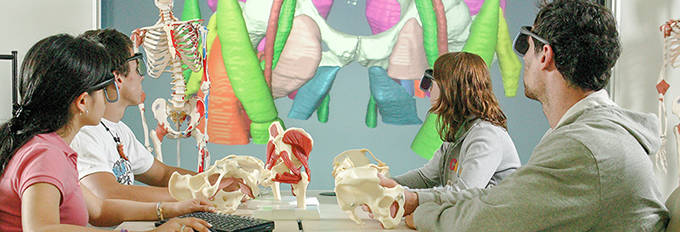
The reform of medical studies is one of the flagship measures of the “My Health 2022” bill, which should be adopted in July 2019. Its ambition is to promote a better match between the training of doctors and the needs of the population. Among the different measures is the abolition by 2020 of the numerus clausus and the competition organized at the end of the first year of medicine (but also odontology, pharmacy and midwifery).
This would allow each university to determine its reception capacity, “with regard to the training capacities and the needs of the territories”. Students destined for medicine will now have several access routes.
Some will subscribe to a “health portal”, replacing the current first year common to health studies (PACES), with multidisciplinary lessons and a revisited evaluation system, focusing on reflection and memorization. Others will opt for a bachelor’s degree in the discipline of their choice, coupled with a “minor health” that would integrate the health sector at the end of the second or third year.
This new system, already tested in sixteen universities since 2014, intends to generalize and institutionalize bridges between the medical curriculum and university licenses. Its objective is twofold: to diversify the training and therefore the profiles of future doctors, but also to offer a refreshing reorientation to students who are not admitted to medicine (today representing around 80% of enrollments in the first year).
Inescapable selectivity< /span>
Announced as “revolutionary” in terms of impact on the health system, the new methods of access to medical studies are part of the continuity of recent decades. Indeed, despite the formal existence of a national-level numerus clausus , the number of places offered at the end of the first year has steadily increased since the mid-1990s.
Spread over the four sectors (medicine, odontology, pharmacy and midwifery), the increase was particularly marked for the number of medical seats, from 3,500 in 1993 to 9,314 in 2019 (+ 166%). Given the structure of medical studies, the disappearance of the competition at the end of the first year will not end the selectivity.
Since the Debré reform of 1958, the training of doctors has been organized around University Hospital Centers (CHU), which are both places of care, education and research. This makes it an exception in the landscape of French higher education, which until recently has distinctly separated teaching, research and professional practice.
Medical studies are inseparable from clinical practice and research. The number of places in these courses is therefore directly related to the trainee capacity of trainees in the services of hospitals.
Easier reorientations
With regard to the diversification of initial training courses and the development of new skills, the reform prolongs old reflections to respond to new concerns. In an aging world confronted with technological upheavals, the intensification of societal expectations of medicine is again questioning the content and training methods of future professionals.
Already in 1973, Professor Robert Debré called for a medical training mobilizing other disciplines (public health, statistics, psychology, economics, sociology) and developing skills in the fields of medicine, presence, speech .
More recently, in a report presented to the Senate in 2017, the Court of Auditors reaffirmed the necessary integration of interdisciplinary teaching in medical education. The combination of knowledge and skills from different research traditions, such as engineering sciences, philosophy and environmental sciences, is considered essential to equip health professionals in the face of changes in professions and skills. to prepare “the medicine of tomorrow”.
More than the health system, it is probably French higher education that can benefit from this reform. Gateways and reorientation mechanisms seek to retain students within the same institution, thus restoring a new attractiveness to university licenses.
The disaffection of high school graduates, especially those who have the best results in baccalaureate, for university licenses in favor of preparatory classes for grandes écoles or private institutions has been increasing for twenty years. It is in the same spirit that can be understood the recent policy of “university training of health formations” which aims to bring back in the bosom of the universities paramedical trainings, in particular the institutes of training in nursing (IFSI) which count among the most requested courses at the exit of the tray (in 2019 9.6% of vows confirmed via the Parcoursup platform).
Thus, by diversifying the methods of access to medical studies and failing to meet the challenge of medical deserts, the government could breathe new life into French universities like what is practiced in the “Bachelors of Medicine”. Liberal Arts “North American campuses, true crucibles of inter-professionalism. It remains to be seen whether the students will accept the proposed reorientations and the logic behind them.
Author Bio: Alessia Lefebure is an Assistant Director, Director of Studies at the School of Advanced Studies in Public Health (EHESP) – USPC
